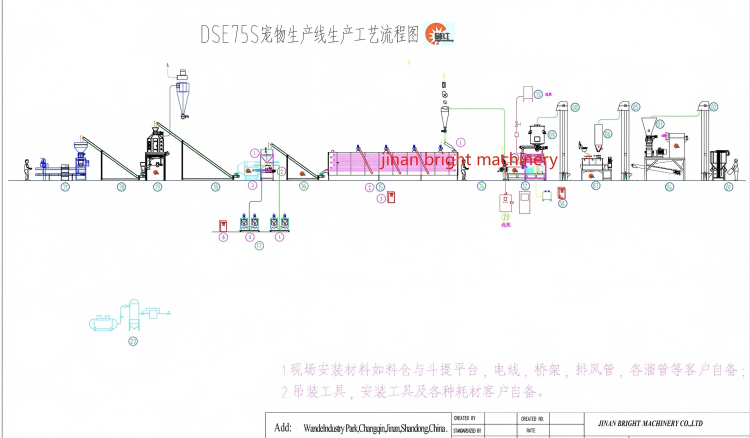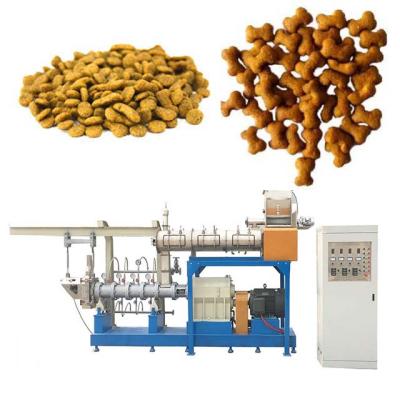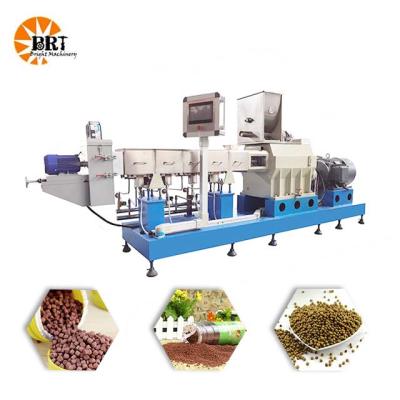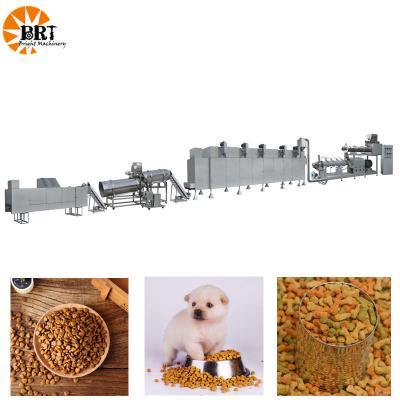How to Handle High Protein Extruded Feed
Protein is the main nutrient for pet aquatic products. To improve the puffing effect of pet aquatic feed (high-protein formula), comprehensive optimization is required from three aspects: raw material characteristics, process parameters, and equipment adjustment. The following are specific measures:
Raw material selection and puffing process
1. Optimization of high-protein raw material ratio
Mainly animal protein: Animal protein such as fish meal, chicken meal, blood meal (accounting for ≥40%) is easier to puff than plant protein because of its loose structure and fat content.Starch-assisted puffing: Add 10-20% pregelatinized starch (such as cassava starch) or wheat flour as a puffing "skeleton" to make up for the problem of insufficient viscoelasticity of high-protein raw materials.Control fiber content: Fiber (such as rice bran) needs to be ≤5%. Too high will hinder the formation of puffing pores.2. Raw material grinding fineness* The raw materials need to be crushed to 60-80 mesh. Too coarse particles will lead to uneven puffing, and too fine particles may block the die holes. 3. Moisture adjustment After mixing, the moisture content of the conditioning should be controlled at 22-28% (lower for aquatic feed). Too high will easily lead to hard feed, and too low will lead to insufficient expansion. Extrusion process parameter adjustment 1. Temperature and pressure Segmented heating: Select a multi-stage zoned heating system, which is divided into feeder, compression zone, and melting zone as a whole. Die head pressure: Maintain 2.5-4MPa. Too high pressure will easily lead to excessive feed density.2. Screw configuration and speed Screw combination: High shear force screw (such as double helical tooth block) enhances material mixing and avoids protein agglomeration.Speed adjustment: 250-350rpm is recommended for aquatic feed. Too high speed will cause excessive shearing and damage the protein structure.
3. Die hole design and cutter Die hole aspect ratio (L/D): Select 1.5-2.5 (such as 2mm hole diameter, 3-5mm die hole length) to ensure full expansion and finalization. Cutter speed*: synchronized with the extrusion discharging speed, the particle length is controlled at 1-3mm (smaller for floating feed).
Extrusion aids and quality control
1. Extrusion aids
Add 0.5-1% monoglyceride or lecithin to reduce material viscosity and improve extrusion uniformity. 0.2% sodium bicarbonate (baking soda) can release CO₂ and increase porosity. 2. Protein protectant
Add 1-2% yeast extract or hydrolyzed protein at high temperature to reduce the loss of heat-sensitive components such as lysine. 1. Extrusion degree evaluation
Floating rate: high-quality aquatic feed should be ≥95% (immersed in static water for 30 minutes). Bulk density determination: the bulk density after extrusion is controlled at 300-500g/L (adjusted according to the sinking and floating requirements). 2. Protein solubility Using KOH method to test, protein solubility should be ≥75%, too low indicates excessive denaturation
Common problems and equipment selection
Use high torque extruder: such as twin screw extruder (more suitable for high protein formula than single screw).Add temperature control module: real-time monitoring of each section temperature, deviation within ±2℃.Post-spraying system: spray grease or heat-sensitive additives (such as vitamins) after extrusion to avoid high temperature damage.



